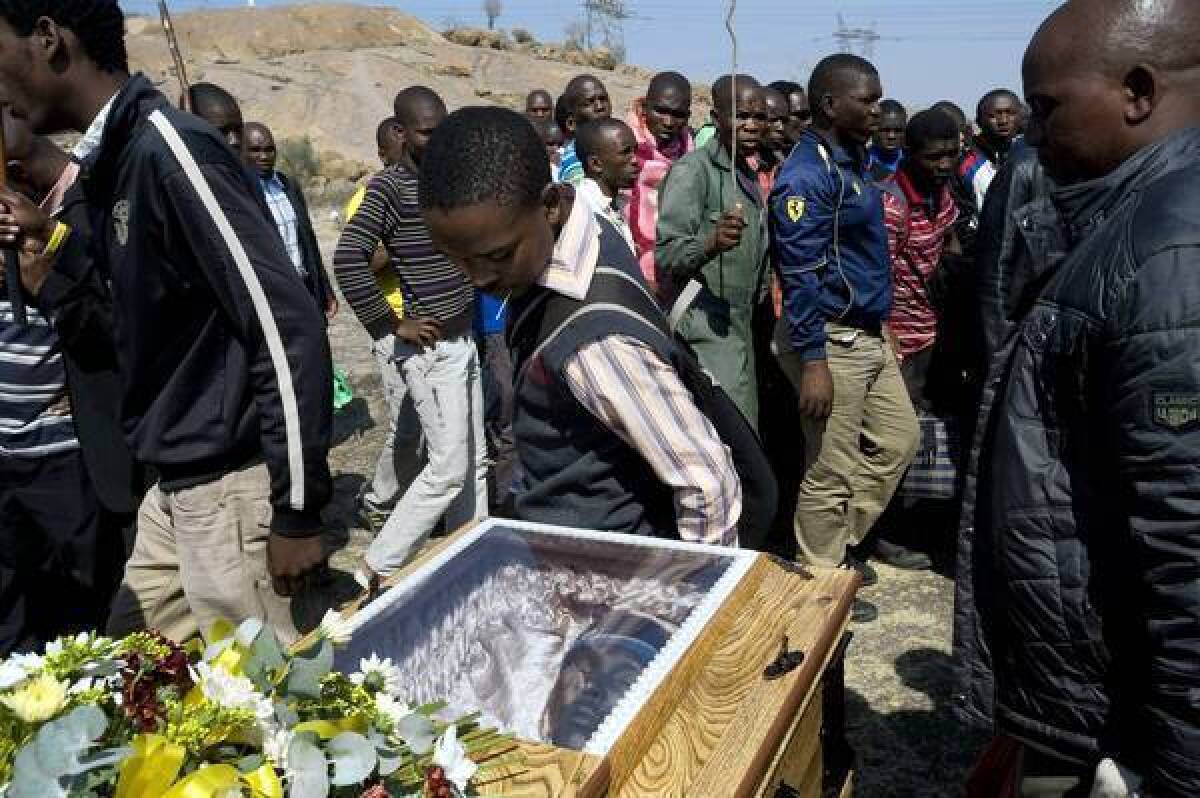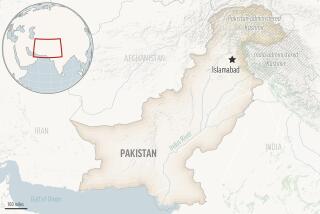Outcry in South Africa as striking miners charged with murder

JOHANNESBURG, South Africa — Prosecutors came under intense pressure Friday to withdraw murder charges against striking platinum miners accused of collusion in police shootings that killed 34 miners and wounded more than 70.
Justice Minister Jeff Radebe demanded an explanation from the acting director of the National Prosecuting Authority, Nomgcobo Jiba, on the decision to press charges against 270 miners at the Lonmin company’s Marikana mine, northwest of Johannesburg.
The killings on Aug. 16 have thrown into sharp relief the country’s deep problems with inequality and poverty 18 years after the African National Congress took power. The decision to charge miners under the apartheid era “common purpose” law fueled anger and illustrated the ANC’s alienation from poor workers who had been a major element of its political base.
Legal experts said it was nonsense to suggest that the platinum miners had colluded with police to open fire and predicted that the charges would be thrown out when bail hearings for the miners are held next week.
President Jacob Zuma has set up a judicial inquiry on the shootings; a report is due in January.
Meanwhile, allegations surfaced that the slain miners were not killed poorly trained police officers firing in panic, as some critics had charged, but rather were hunted down and shot at close range.
That version of events emerged from interviews with miners and an examination of the scene, said University of Johannesburg professor Peter Alexander, who heads the South Africa Research Chair in Social Change.
Alexander said miners told him that police with riot trucks surrounded a kopje, or rocky hill, as helicopters flew overhead. Many miners were huddled in an enclosed rocky area, witnesses told him. Police moved in shooting, and no one came out alive, he quoted them as saying.
The miners now call the place “the killing kopje,” Alexander said in an interview.
“It’s a confined space. There are a lot of crevices and rocks and bushes,” he said. “You would have had to get quite close I think, to be able to kill them.”
“None of the police was injured, and they had automatic weapons,” Alexander said.
He said police forensic markings painted on the rocks in and around the kopje indicated each place a body was found. He did not have the exact number killed there.
“They [police] moved into this place where a lot of people had gone, and shot them,” Alexander said, recounting testimony from miners. “You could hear the shooting. You could see the helicopters. You could see them shooting and see that no one was coming out alive.”
The day of the killings, several thousand striking miners armed with machetes, spears and clubs were ordered by police to disperse. As police laid razor wire, a group of miners ran toward them.
Television video showed a group of miners charging toward heavily armed police, who opened fire and kept shooting for several minutes. When the dust cleared, about 10 bodies were lying on the ground, raising questions about where the others were killed and injured.
South African news reports have said that most of the dead miners were shot in the back as they tried to flee. Several miners told Alexander that police riot trucks, known locally as nyalas, ran over some prostrate miners.
The mine violence followed wage protests at other mines and in dozens of townships where anger over poor government services has exploded in recent years.
Several union stewards and police officers were killed at the Marikana mine before the Aug. 16 police shootings. The evening before the shootings, union president Senzeni Zokwana refused to come out of the safety of a police riot truck to address the strikers.
Miners’ anger wasn’t directed just at management, but at the police, the ANC government and one of the most powerful unions allied with the party, the National Union of Mineworkers. Many miners believe the union has betrayed their interests.
In a powerful symbol of how deeply the crisis has undermined confidence in the government and police, several ministers who attended a mourning ceremony for the slain miners last week were forced to leave when miners carrying clubs stormed toward the stage, according to South African news reports. Police were barred by the miners from attending.
Instead, Julius Malema, the former leader of the ruling party’s Youth League who was expelled in April for sowing division in the ANC, addressed the miners and bitterly attacked Zuma.
Fueling the miners’ anger was the fact one the country’s most influential, politically connected businessmen, Cyril Ramaphosa, sits on the board of London-based Lonmin, the world’s third-largest platinum producer.
Ramaphosa, a prominent ANC figure who helped found the National Union of Mineworkers in 1982, heads the Shanduka Group, a holding company with investments in mining, food and beverages, cellphone companies and other sectors. The company is worth close to $1 billion, according to Forbes.
Thursday’s decision to charge the miners with murder in the deaths of their comrades is particularly controversial in South Africa because it is a throwback to the apartheid era. The white-minority government used collusion laws against some of the ANC’s iconic figures, including Solomon Mahlangu, who was hanged in 1979 for two killings by a comrade in a shootout with police.
But, critics say, the way the law is being used in this instance is particularly twisted.
“It’s a very complex situation to establish,” said Vincent Nmehielle, a professor of law at the University of the Witwatersrand. “For you to be able to do this you must show that the other party, even if they didn’t pull the trigger, was in cahoots with the person who pulled the trigger. The simplest example is if the miners had somehow aligned themselves with the police to say, ‘We will do this demonstration, and we would urge you to try to kill us.’
“It’s bizarre. There’s no court where that case could be made.”
More to Read
Inside the business of entertainment
The Wide Shot brings you news, analysis and insights on everything from streaming wars to production — and what it all means for the future.
You may occasionally receive promotional content from the Los Angeles Times.










